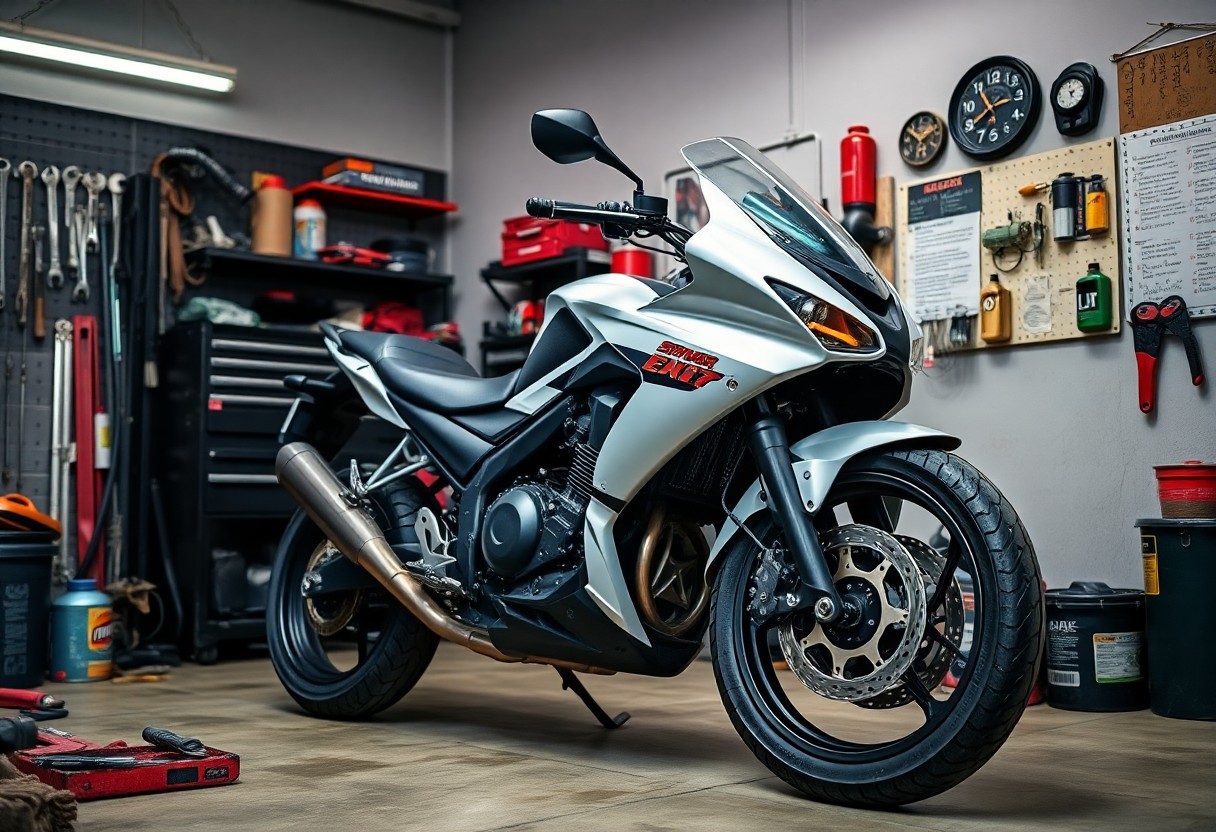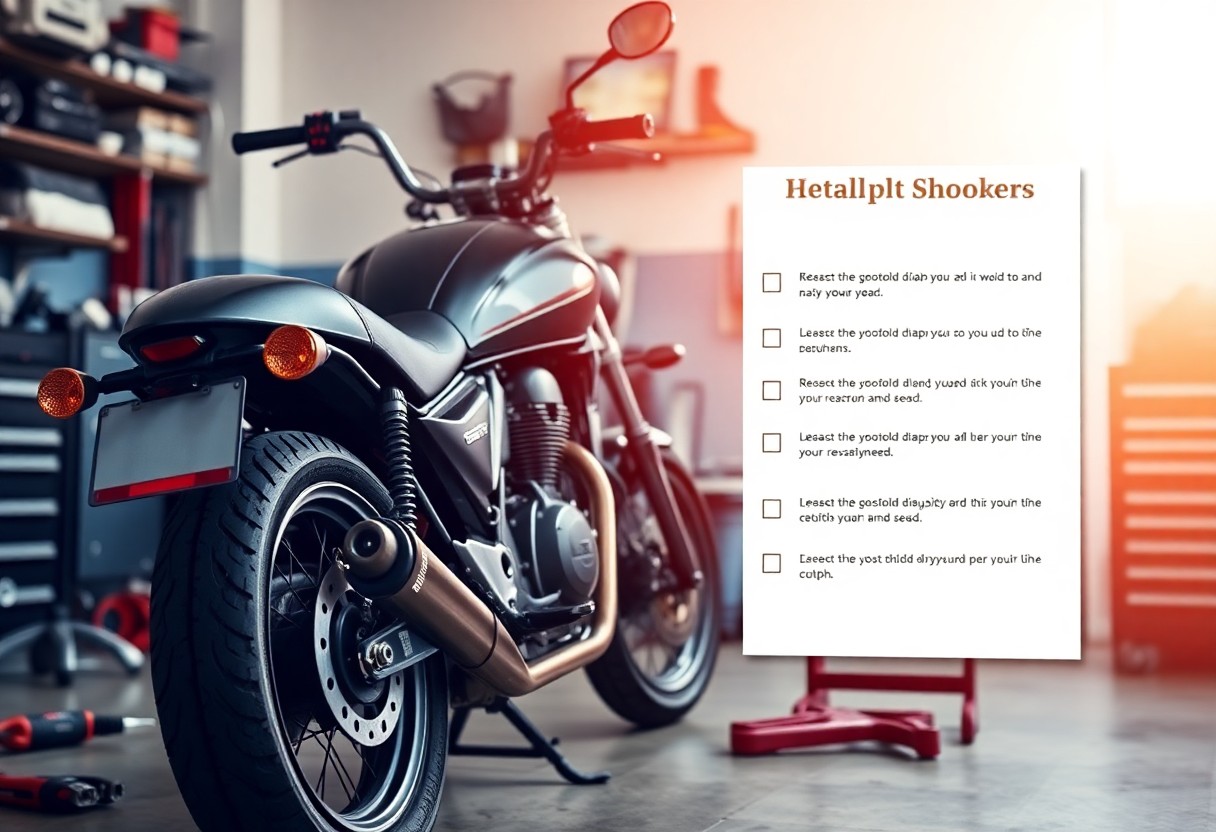With each new season comes the opportunity to ensure your motorcycle is performing at its best. Proper seasonal maintenance is vital for enhancing safety, performance, and longevity of your ride. In this informative guide, you’ll discover seven key steps to revitalize your motorcycle, from checking tire conditions to inspecting fluid levels. By following these guidelines, you’ll be able to tackle any riding adventure with confidence, ensuring your bike is perfectly tuned and ready for the road ahead.
Importance of Seasonal Maintenance
As a motorcycle owner, seasonal maintenance is vital for preserving your bike’s lifespan and optimizing its performance. By conducting regular check-ups, you can ensure that your ride operates at its best, allowing you to enjoy a safer and more enjoyable riding experience. Seasonal maintenance not only keeps mechanical issues at bay but also prepares your motorcycle for the changing weather conditions, ensuring that every journey is both safe and reliable.
Enhancing Performance
Against the odds of wear and tear, regular seasonal maintenance can significantly enhance your motorcycle’s overall performance. By checking and adjusting critical systems such as the brakes, tires, and engine, you boost your bike’s efficiency and responsiveness on the road. This ensures that you maximize your riding experience, boosting both power and fuel economy. Keeping your motorcycle in peak condition translates into a more thrilling and enjoyable ride as you navigate your favorite routes.
Improving Safety
After investing time in your motorcycle, safety should be your top priority. Seasonal maintenance plays a vital role in identifying and resolving potential hazards before they escalate. By routinely inspecting brakes, lights, and tires, you enhance your visibility and control, reducing the risk of accidents on the road.
Seasonal maintenance not only addresses immediate performance concerns but also focuses on long-term reliability and safety. By ensuring all components are functioning correctly, you can avoid sudden failures that may lead to dangerous situations. Simple tasks like checking tire pressure and fluid levels, or ensuring brake pads are in good condition, can drastically improve your response time and handling, fostering a safer riding environment for you and others on the road.
Inspecting the Tires
One of the most important aspects of motorcycle maintenance is inspecting your tires. Tires are your only contact with the road, and ensuring they are in good condition can significantly enhance your riding experience and safety. Start with a thorough look at the tread, sidewalls, and overall integrity of the tires before hitting the road this season.
Tread Depth and Condition
By assessing your tire tread depth, you can determine the safety and performance levels of your tires. Use the penny test or a tire tread depth gauge to check if your tread is adequate. Keep an eye out for any signs of uneven wear or damage, such as cracks and bulges, as these could compromise your tires’ functionality.
Tire Pressure Management
To ensure optimal performance, it’s important to check and maintain your tire pressure regularly. Under-inflated or over-inflated tires can lead to poor handling and increased wear, as well as reduced fuel efficiency. Use a reliable gauge to measure the pressure when the tires are cold and adjust them according to your motorcycle manufacturer’s specifications.
Another important aspect of tire pressure management is to frequently inspect the tires for any air leaks, punctures, or damage. Keeping a close eye on your tire condition helps prevent safety hazards and enhances your control over the motorcycle. Riding with the right tire pressure not only improves your overall experience but can also prolong the life of your tires, ensuring you can enjoy the ride for longer.
Checking and Replacing Fluids
Some of the most vital components of your motorcycle’s performance depend on the fluids circulating in its systems. Regularly checking and replacing fluids helps ensure optimal operation and longevity of your bike. Pay special attention to engine oil, brake fluid, and coolant, as they play a significant role in overall safety and efficiency. Don’t overlook these crucial maintenance tasks to keep your ride running smoothly.
Engine Oil and Filter
Before you hit the road, it’s important to check your engine oil level and quality. Fresh oil ensures proper lubrication and prevents engine wear. Additionally, replace the oil filter during your oil change to maintain the effectiveness of the newly added oil, allowing your engine to perform at its best.
Brake Fluid and Coolant
Fluid levels in your brake and cooling systems directly affect your motorcycle’s performance and safety. Check the brake fluid for clarity and maintain it at the recommended level to ensure optimal braking performance. Similarly, monitor your coolant levels and replace it if it appears dirty or low, as this will help prevent overheating and engine damage.
For instance, if you notice your brake fluid has a dark or murky appearance, it may be time for a replacement. This discoloration indicates contamination that could lead to brake system issues. Similarly, monitor your coolant to avoid overheating; if it looks rusty or has debris floating, consider a replacement. Regular maintenance of both fluids not only enhances your motorcycle’s reliability but also ensures your safety on the road.
Battery Maintenance
For optimal performance, your motorcycle battery requires regular maintenance to ensure reliability during rides. Seasonal checks will help prolong battery life and improve starting performance. Keep an eye on your battery’s condition and follow simple maintenance steps to keep your ride ready for the road.
Cleaning and Inspecting Terminals
Along with checking your battery’s charge, you should clean and inspect the terminals regularly. Corrosion can accumulate around the connections, obstructing electrical flow. Use a mixture of baking soda and water to clean any buildup, ensuring terminals are tight and free from grime.
Charging and Testing
Below, understanding how to charge and test your battery is vital for maintaining its health. Check your battery’s voltage with a multimeter, and charge it if it shows a low reading. A fully charged battery should register around 12.6 volts or higher.
Plus, consider investing in a smart charger that can automatically adjust the charge rate. This will prevent overcharging and help maintain battery health. Regularly testing the battery’s voltage while in use can also provide insights into its overall condition, enabling you to replace it before it fails you on the road.
Brake Inspection
Many riders overlook the importance of brake inspection during seasonal maintenance, yet it’s imperative for your safety on the road. Regularly checking the operational condition of your motorcycle’s braking system can help prevent accidents and ensure optimal performance. Make it a habit to assess all components of your brakes, from pads to lines, ensuring everything is in perfect working order before hitting the open road.
Pads, Calipers, and Lines
Lines should be free from cracks or leaks while calipers must slide smoothly and operate without sticking. Inspect the brake pads for wear; they should have adequate thickness to provide ample stopping power. Any signs of uneven wear indicate the need for immediate attention, as this can affect your motorcycle’s overall braking performance.
Brake Fluid Levels
Brake fluid is vital for the proper functioning of your braking system. Ensure your motorcycle has the right fluid levels; low fluid can lead to air entering the lines, compromising your brakes.
Hence, routinely check and top off your brake fluid to maintain performance. Store a suitable brake fluid according to your motorcycle’s specifications and replace it as recommended by the manufacturer. Flushing the system every couple of years will help maintain responsiveness and prolong the life of your brake components.
Chain and Drive System Care
After months of riding, your motorcycle’s chain and drive system can accumulate dirt and wear. Proper care ensures optimal performance and longevity. Regular maintenance not only keeps your bike running efficiently but also provides a safer riding experience. Be attentive to these components to maintain the overall health of your motorcycle.
Cleaning and Lubrication
Behind every smooth ride is a well-maintained chain. You should clean your motorcycle’s chain regularly to remove debris and grime that can cause wear. Applying a quality lubricant tailored to your chain type helps ensure it operates smoothly, reducing friction and improving life expectancy. Make this a routine part of your maintenance schedule.
Tension Adjustment
Among the most important aspects of chain care is ensuring your chain is correctly tensioned. A chain that is too tight can lead to excessive wear on both the chain and sprockets, while a loose chain can slip, causing potential hazards during rides. Regularly check the tension according to your motorcycle’s specifications to enjoy a smoother experience.
In fact, adjusting the chain tension should be a part of your pre-ride inspection. The ideal tension allows for proper engagement with the sprockets while eliminating unnecessary stress on the drivetrain. If you’re unsure about the correct tension, consult your owner’s manual for specific guidelines. Regularly checking and adjusting the chain tension will enhance your riding experience and prolong the life of your motorcycle’s drive system.
To wrap up
Presently, ensuring your motorcycle is primed for the season is vital for both performance and safety. By following these 7 steps for seasonal maintenance, you can enhance your riding experience and extend the lifespan of your bike. From checking your tires to inspecting the fluids, each step reinforces the reliability of your ride. So take the time to invest in your motorcycle’s upkeep; you’ll enjoy the open road with peace of mind, knowing that you’ve done what it takes to keep your bike in top shape.


